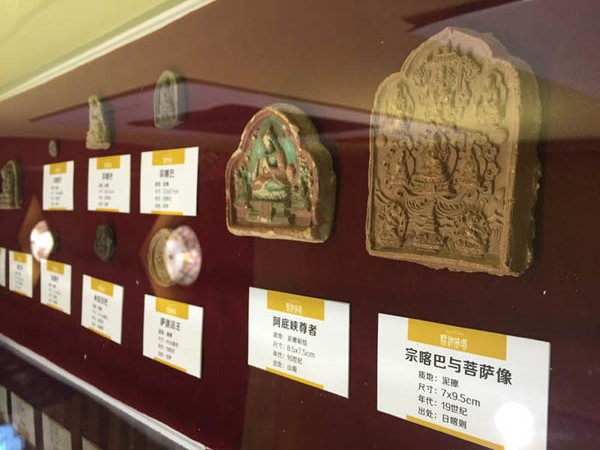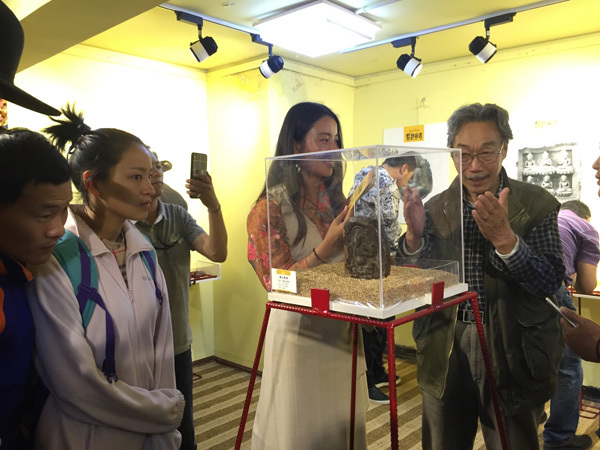
Tsa-tsas, or miniature figurines, exhibited on Barkor Street in Lhasa, Tibet autonomous region, August 14, 2016.(Photo by Palden Nyima/chinadaily.com.cn)
More than 300 exquisite tsa-tsas, or miniature figurines made by Tibetan Buddhists, went on display in Lhasa's Barkor Street on Sunday.
Tsa-tsa figures are votive clay images that are deposited as offerings within stupas, holy caves and monastery altars in the Himalayas and other sacred places.
Impressions in the clay are made with a metal reverse-image engraving of a hallowed deity or sacred symbol. The stamped images are then dried in the sun and in some cases fired into pottery.
The new exhibition of tsa-tsas, called "Accumulating Sand Into Stupa", is being hosted by the Tibet Artists Association and two other cultural media companies in Lhasa.
All the works on display were contributed by Zhang Ying, a national level artist who has a collection of more than 1,000 tsa-tsas.

The pottery and clay items came from Lhasa, Xigaze, Shannan and Ngari.
"Collecting tsa-tsas is a hobby of mine. I have had the chance to visit different Tibetan places since the 1980s when I was working in the Tibet Art Institute," said Zhang, adding that he was drawn to the figurines by both their artistry and cultural connotations.
Phuntsok Drolma, a Tibetan student from Fudan University, said she cherished the opportunity to see the exhibition.
"Tsa-tsas are not really highly valued as folk art, but they tell the story of the changes in Tibetan history and culture," she said, describing the exhibition as "a visual feast".
The tsa-tsas on display at the exhibition date from the 11th century to the 20th century.


















































